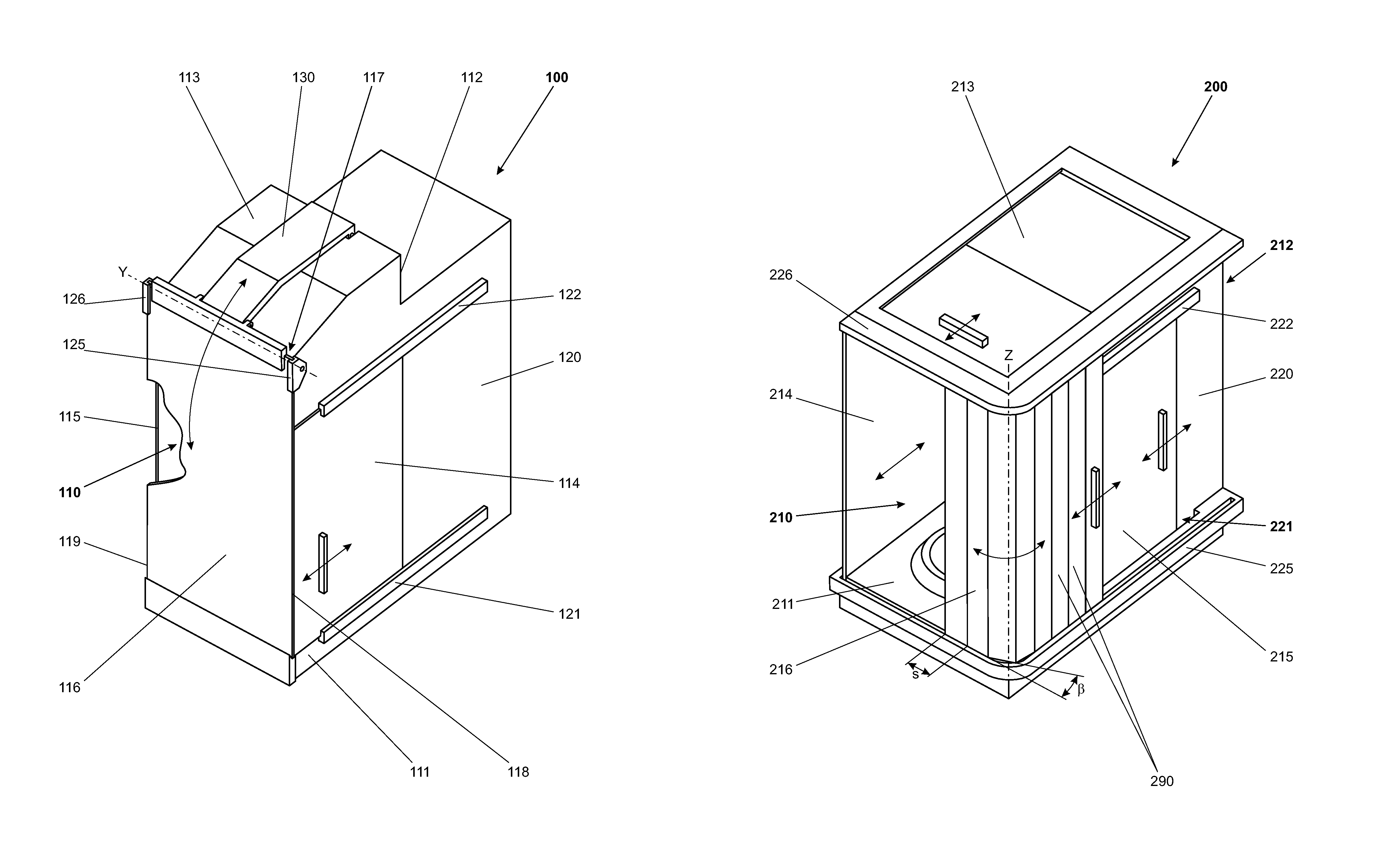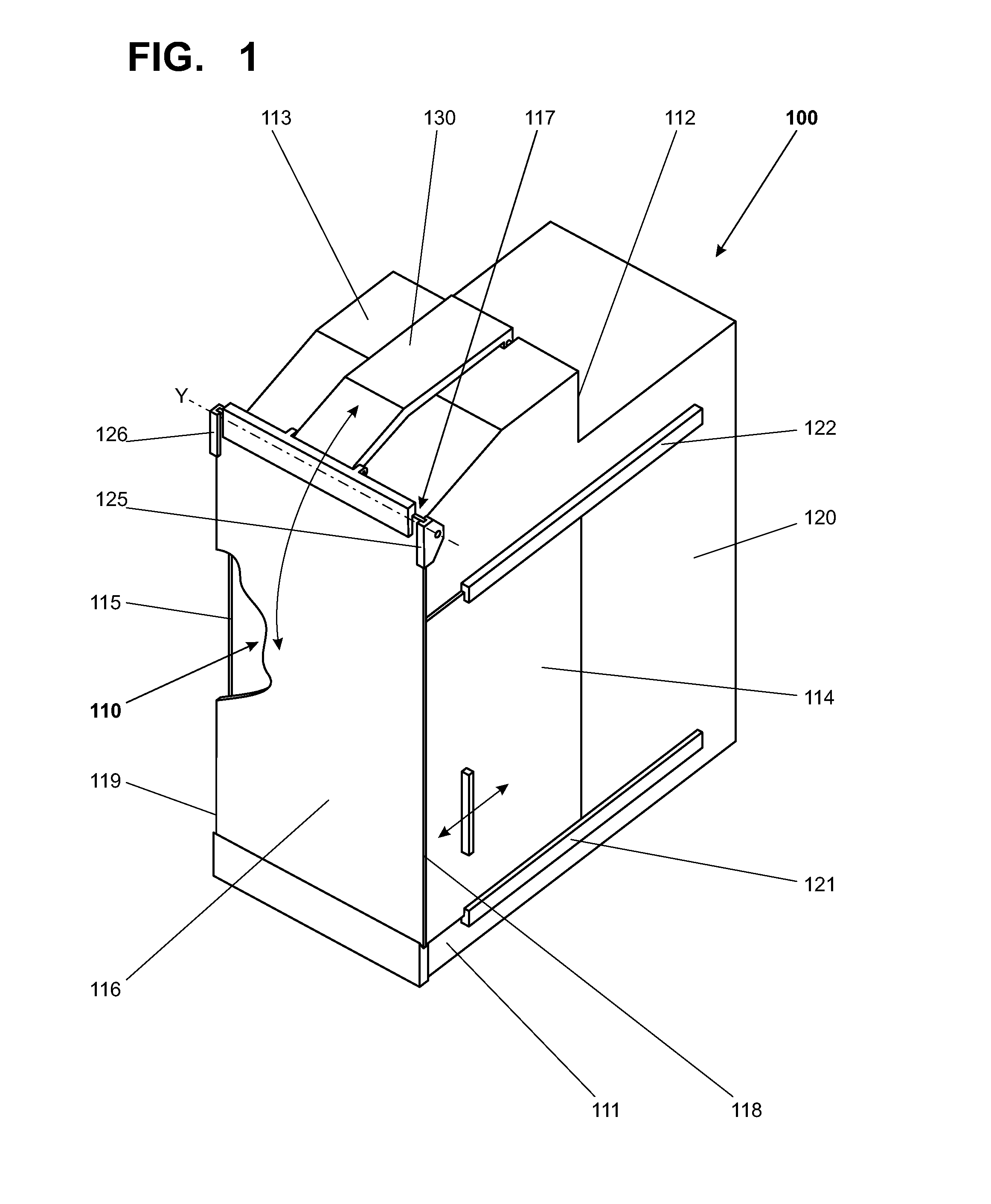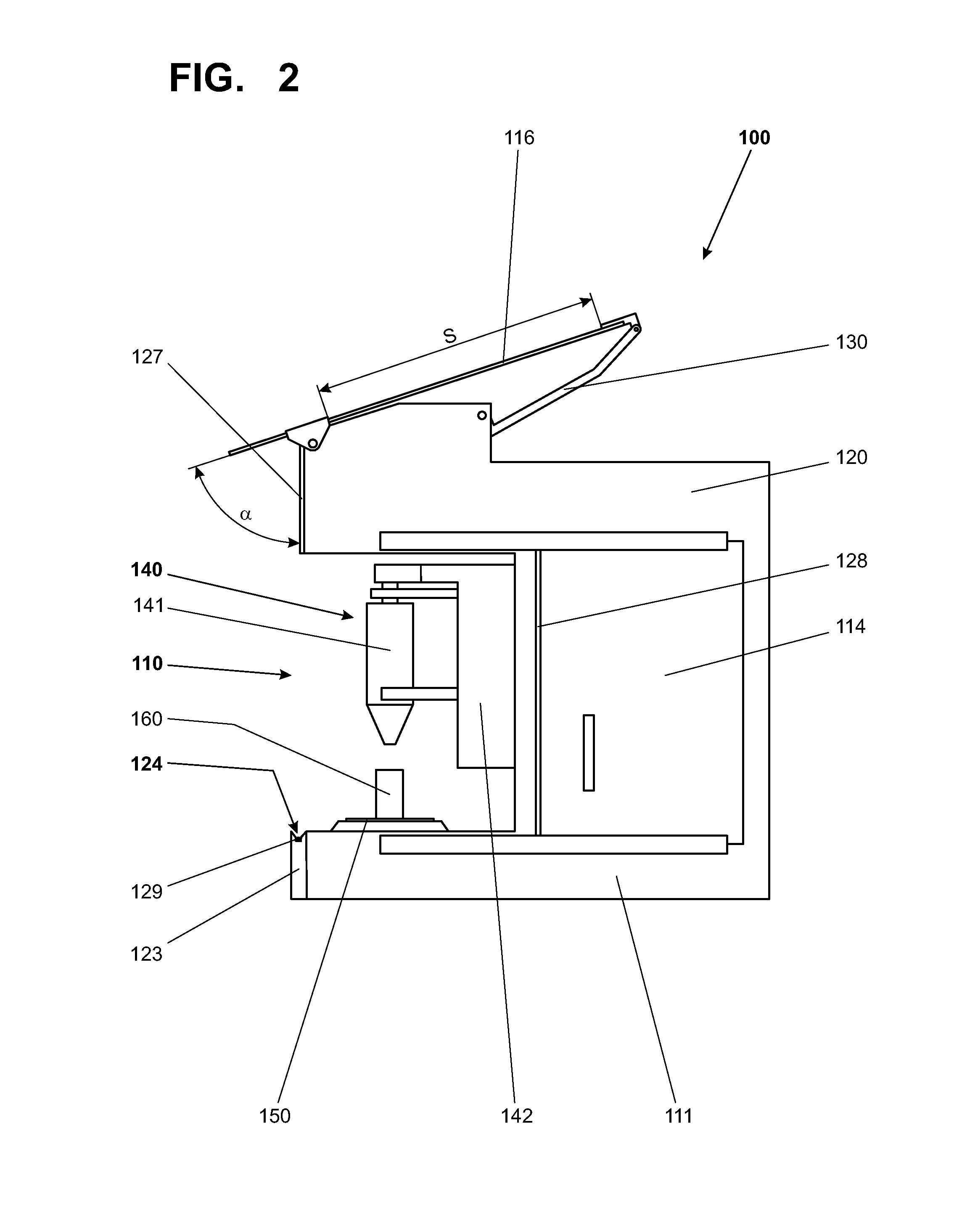Laboratory instrument with a protected working compartment
a working compartment and laboratory equipment technology, applied in the direction of instruments, wing accessories, hinges, etc., can solve the problems of inability to determine the exact weight of the weighing object, the weighing object is often unstable, and the weighing object is difficult to access, etc., to achieve excellent access to the working compartment, reduce the height dimension, and reduce the amount of free space required above the working compartment.
- Summary
- Abstract
- Description
- Claims
- Application Information
AI Technical Summary
Benefits of technology
Problems solved by technology
Method used
Image
Examples
first embodiment
[0038]FIG. 1 shows a three-dimensional view of a laboratory instrument 100 in a first embodiment, with a working compartment 110 shown in the closed state and with a housing 120 adjoining the weighing compartment. The floor 111, the rear wall 112 and the top cover 113 of the working compartment 110 are configured as parts of the housing 120. The working compartment 110 is delimited at the sides by two sidewalls 114, 115 which are guided by tracks 121, 122 and thereby constrained so that they can only slide to the back in a linear movement. The working compartment 110 is delimited towards the front by a plate-shaped rigid front wall 116.
[0039]The front wall 116 is constrained by two linear sliding guides 125, 126 which are pivotally connected to the housing 120 and thus are part of a guiding device for the front wall 116. One of the two linear sliding guides is arranged in each corner area of the front edge 117 of the top cover 113 with the ability to pivot about a horizontal swivel ...
second embodiment
[0048]FIG. 3 shows a laboratory instrument 200 in three-dimensional view in a second embodiment which likewise has a housing 220 and a working compartment 210. The floor 211, the rear wall 212 and the top cover 213 of the working compartment 210 are configured as parts of the housing. The working compartment 210 is delimited on the sides by two sidewalls 214, 215 which are guided in tracks 221, 222 and can be pushed to the back in a straight-line movement. The working compartment 210 is further delimited towards the front by a front wall 216 which has a multi-part configuration. It consists essentially of a plurality of lamellar sections 290 which are articulately connected to each other. The front wall 216 is guided by guide tracks 225, 226 arranged, respectively, in the floor 211 and the top cover 213 and serving as guiding devices. These guide tracks 225, 226 extend along the front edge and one side of the laboratory instrument 200. These tracks have essentially one guide groove ...
PUM
 Login to View More
Login to View More Abstract
Description
Claims
Application Information
 Login to View More
Login to View More - R&D
- Intellectual Property
- Life Sciences
- Materials
- Tech Scout
- Unparalleled Data Quality
- Higher Quality Content
- 60% Fewer Hallucinations
Browse by: Latest US Patents, China's latest patents, Technical Efficacy Thesaurus, Application Domain, Technology Topic, Popular Technical Reports.
© 2025 PatSnap. All rights reserved.Legal|Privacy policy|Modern Slavery Act Transparency Statement|Sitemap|About US| Contact US: help@patsnap.com



